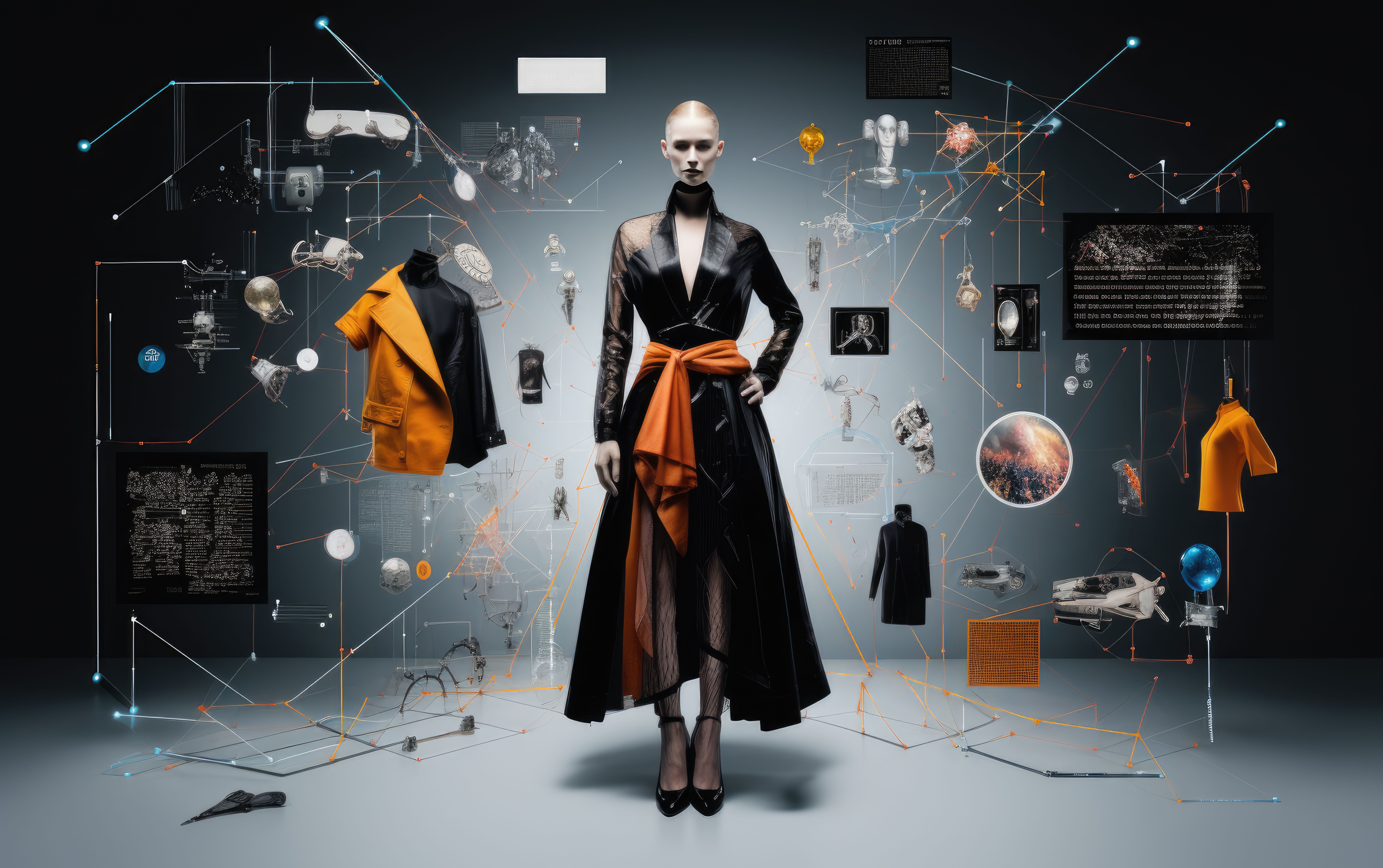Beyond the AR Shopping Experience: What Comes Next
Why AI & Fashion Are the Perfect Match for Modern Shopper


Introduction: Where Tech Meets Taste
Let’s face it—shopping today can be overwhelming. One minute you're browsing for a casual white shirt, and three hours later, you’re drowning in an ocean of tabs, unsure what you even wanted. As fashion trends evolve rapidly and consumer expectations grow, the pressure on shoppers and brands has never been higher. That's where AI and fashion come together—blending creativity with intelligence to deliver smarter, more personalized experiences.
In this blog, we’ll explore how AI is shaping fashion across design, shopping, and sustainability. From virtual try-ons to real-time trend forecasting, Glance AI is transforming the industry—making it more efficient, intuitive, and aligned with what the modern shopper truly needs.
How AI Is Reshaping the Fashion Experience
1. Personalized Shopping Experiences
No two shoppers are alike. That’s why AI uses behavioral data—your search history, clicks, preferences, even your mood—to recommend clothing, accessories, and deals just for you. Brands like Amazon and Glance leverage AI to curate entire wardrobes based on your past choices, time of day, and location.
Imagine logging into your shopping app and being greeted with a collection titled “Chic Comforts for a Rainy Day”—complete with suggestions for cozy knits and waterproof boots. That’s AI in action.
2. Visual and Voice Search
Don’t know what a style is called? Just snap a picture or say what you're looking for. Visual and voice search powered by AI allow users to search more naturally.
Platforms like Google Lens, Pinterest Lens, and Glance AI help users upload images or describe clothing to find similar or exact pieces. Say goodbye to awkward keyword combinations like “boho dress with bell sleeves floral.” AI gets it.
3. AI-Powered Stylists and Chatbots
Virtual stylists now offer fashion advice 24/7. Chatbots can recommend fits, sizes, and accessories. Levi’s chatbot, for example, asks a few style-related questions and suggests perfect jeans based on body type and style goals.
It’s like shopping with a stylist—only faster, cheaper, and available on demand.
Why Does AI Matters in the Fashion Industry?

The fashion industry is undergoing a profound transformation driven by environmental urgency, evolving consumer expectations, supply chain volatility, and rapid digital innovation. At the heart of this shift lies AI—not just as a tool, but as a powerful enabler of meaningful change.
For consumers, it means a move toward fashion that aligns with individual values, embraces diverse body types, honors sustainability, and fosters authentic self-expression.
AI in Fashion Design and Trend Forecasting
1. Predictive Trend Forecasting
Fashion forecasting is no longer based solely on runway shows and expert opinion. AI scans millions of social media posts, fashion blogs, and purchase data to predict what’s next. It helps brands like Zara, H&M, and Boohoo act faster and more accurately.
If bold green blazers start trending on TikTok, AI picks up the buzz before it becomes mainstream—giving brands the head start they need.
2. Generative Design
AI tools can now co-create designs. For example, platforms like Stitch Fix blend AI and human stylists to recommend clothing combinations. AI suggests color palettes, fabric types, and design variations based on consumer demand and historical success.
This shortens the design cycle while keeping the collections fresh and relevant.
Virtual Try-Ons & Digital Avatars

Ever bought something online that looked great in the picture but flopped in real life? AI aims to fix that.
1. Augmented Reality (AR) + AI = Try Before You Buy
Apps like Sephora Virtual Artist, Snapchat Try-On, and Glance AI let users try clothes or makeup on digital avatars. You can even create a 3D model of yourself to see how items will fit, drape, and flatter you.
This minimizes return rates and boosts buyer confidence—making online shopping more reliable and engaging.
2. Glance AI: A Game-Changer in Try-Ons
Glance allows users to interact with AI-powered fashion recommendations directly from their smartphone and lock screen. Its avatar based experiences help shoppers instantly visualize how a product looks on their own AI digital twin.
No more guesswork. Just style clarity.
How AI is Revolutionizing Fashion for You?

Artificial Intelligence is fundamentally reshaping how we discover, select, and wear fashion—shifting the experience from generic mass-market offerings to tailored, intelligent journeys. What sets this apart is not just convenience or automation, but the depth of personalization that continuously adapts to each consumer's evolving identity, preferences, and context.
Learns Your Style
AI fashion platforms go far beyond static recommendations. They now understand you through multi-dimensional data inputs:
- Purchase History Analysis: Tracks patterns in fabric, fit, brand loyalty, and even preferred silhouettes.
- Visual Preference Learning: Interprets how you interact with fashion imagery to decode aesthetic leanings, even subconscious ones.
- Adaptive Style Quizzes: Uses dynamic questioning logic to hone in on preferences faster and more accurately.
- Social Media Signals: (With consent) Detects aspirational style cues based on likes, follows, and image engagement.
These systems don’t just respond to what you say you like—they learn from how you behave and adapt accordingly.
Offer Context-Aware Recommendations
Modern AI doesn’t just ask what you want to wear—it infers when, where, and why.
- Weather-Responsive Styling: Outfits recommended based on local climate and forecast.
- Calendar-Aware Suggestions: Auto-syncs with your events to deliver relevant looks (e.g., business casual vs. cocktail).
- Mood-Based Inputs: Tailors recommendations based on how you’re feeling that day.
- Activity-Aware Outfitting: Curates attire that fits your lifestyle—gym, travel, work, or leisure.
Builds a Living Style Profile
Unlike old-school personalization, today’s AI builds evolving profiles that grow smarter over time.
- Initial Style Snapshots: Kicks off with preference tests and demographic data.
- Continuous Learning Loops: Every click, save, and return refines your fashion identity.
- Weighted Preferences: Knows that some likes (or dislikes) matter more than others.
- Style Evolution Mapping: Tracks when you’re chasing trends vs. reshaping your core wardrobe identity.
Provides Hyper-Personalization
We’re only scratching the surface. Here’s what lies ahead:
- 3D Body Integration: Tailors sizing and fit down to your body’s unique contours.
Wardrobe Ecosystems: Suggests items that complement what you already own. - AI Trials: Let you visualize outfits before buying.
The power of AI in fashion lies in amplifying your individuality—removing friction, reducing decision fatigue, and turning everyday dressing into a smarter, more expressive ritual.
Predicts Seasonal Trends
AI decodes emerging fashion cues with unmatched scale and precision:
- Visual Intelligence: Tracks colors, silhouettes, patterns, and design details from millions of images across runways, social media, and street style.
- Sentiment Mapping: Analyzes fashion conversations to gauge emotional tone, velocity, and influencer impact.
Contextual Awareness: Integrates economic indicators, spending patterns, and cultural events to anticipate shifts.
AI doesn’t just spot trends—it validates them, turning cultural signals into commercial clarity.
Benefits of AI and Fashion for the Modern Shopper
- Time-Saving: Get relevant options instantly. No more browsing fatigue.
- Confidence Boosting: Visual try-ons help eliminate sizing or style doubts.
- Personalized: Your fashion feed evolves with your taste.
- Fun & Interactive: Conversational UIs make shopping feel like play.
- Sustainable: Buy what you need and love—cutting fashion waste.
Challenges and Considerations
Despite its potential, the integration of AI and fashion brings a few hurdles:
- Privacy Concerns: Personalized experiences require data. Transparent policies and opt-outs are critical.
- Bias in AI Models: AI can replicate fashion stereotypes or ignore diverse styles if not trained inclusively.
- Cost Barriers: Smaller brands may lack resources to integrate complex AI systems.
- Over-Personalization: Can create a filter bubble—limiting style exploration.
What the Future Holds for AI and Fashion
1. Predictive Shopping
AI will soon suggest purchases before you even realize you need them. For instance, a weather-aware app might recommend rain boots as a storm approaches your city.
2. Zero-UI Interfaces
Shopping through voice assistants, smart mirrors, or even gesture-based interfaces will redefine user convenience.
3. Wearable AI
Imagine clothes that adjust based on body temperature or movement, or smart fabrics that track your posture. That’s not sci-fi anymore.
4. AI-Powered Fashion Shows
Virtual runways created entirely by AI may become the next big thing, democratizing access to global fashion events.
Conclusion: A Stylish Future, Powered by AI
AI and fashion are no longer two separate domains. Together, they are reinventing how we shop, design, and wear what we love. For the modern shopper, this means a curated experience—faster, smarter, and infinitely more personal.
From reducing return rates to predicting your next favorite outfit, AI and fashion are not just transforming the industry—they’re elevating your entire style journey.
So next time you shop online and everything feels magically relevant, seamless, and stylish, remember: it’s not magic. It’s AI. And it's here to stay.
FAQs
1. How is AI used in fashion today?
AI helps with product recommendations, visual search, trend forecasting, and virtual try-ons—enhancing both shopper experience and backend efficiency.
2. Can AI really predict fashion trends?
AI can predict fashion trends, and it’s already doing it with impressive accuracy. It sifts through massive streams of data—social media posts, search spikes, e-commerce behavior, runway imagery, even influencer engagement—to spot patterns long before they hit mainstream shoppers. This makes it faster and often more precise than traditional forecasting alone.
3. How does AI improve sustainability in fashion?
AI improves sustainability in fashion by tackling waste and inefficiency at every step of a garment’s journey. It predicts demand more accurately so brands produce only what shoppers are likely to buy, cutting overproduction—the industry’s biggest sustainability problem. It also helps designers choose lower-impact materials, reduces sampling waste through digital prototypes, and guides smarter sourcing by analyzing supplier practices. On the customer side, AI supports better product recommendations and returns management, which lowers the environmental cost of shipping and discarded items. As these systems mature, they’re speeding up the shift toward circular models, where clothes are reused, resold, or recycled instead of ending up in landfills.
4. Are AI-driven fashion tools only for big brands?
AI-driven fashion tools aren’t just for big brands anymore. Large fashion houses may use enterprise-grade systems, but affordable AI platforms now make the same capabilities—like trend prediction, automated product tagging, virtual try-ons, and smarter inventory planning—available to small and mid-sized labels. Many indie designers already use these tools to speed up design work, test ideas, and create better customer experiences without huge budgets. This shift is making advanced tech accessible across the industry, not just at the top.
5. Will AI replace human designers?
No, AI cannot fully replace human designers. It can handle repetitive, data-driven tasks like generating layouts, color palettes, or mockups, allowing designers to focus on creativity, storytelling, and emotional impact. AI tools enhance efficiency, provide inspiration, and speed up iterations, but humans are needed for strategic thinking, context, and originality. Designers who learn to integrate AI into their workflow can work faster and more innovatively, while ignoring AI tools may limit competitiveness in the modern design landscape.






